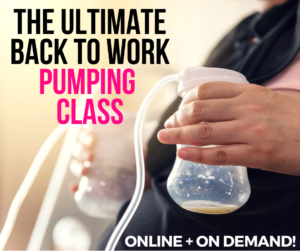Congratulations! You’ve just welcomed a new family member in to the world. Life has turned upside down and now you have to go back to work or school! Now what do you do? There is so much to learn about your baby, how to navigate your life with this new little person, and now how to manage to work and still nourish your baby with the best you have to give. This post will give you a good start on the road to becoming…A PUMPING PRO!
CHOOSING THE RIGHT BREAST PUMP
Whether you go back to work or back to school part-time or full-time, choosing the right pump can make a big difference for your milk supply, your wallet, and your energy. There are two types of pumps, manual and electric pumps.
MANUAL OR ELECTRIC?
Manual pumps are good if you only plan to use them occasionally. They are not beneficial if you will need to pump several times a day. They are not as efficient as an electric pump. An electric pump is a much better choice if you will need to pump enough milk daily to feed your baby while you are away at work or school.
Electric pumps come with either a single or a double pump. There are pumps that are “hospital grade”. Hospital grade pumps remove milk from both breasts at the same time. You can usually pump and be done within 10-15 minutes maximum.
Hospital grade pumps can be used by many people. Each person using a hospital grade pump will have their own pump accessory kit. There is no risk of any cross contamination with a hospital grade breast pump. The accessory kits that come with the pumps are usually paid for by most insurance companies. A hospital grade pump is more powerful and more efficient. It is also more expensive. Many people rent the pumps for a limited period. Some insurance companies cover the cost of renting the breast pump. But if you plan to have more children and plan to work full-time, purchasing one can be an excellent investment.
NEVER BORROW OR BUY A USED PERSONAL PUMP
Personal grade pumps are single user pumps. They are usually meant for pumping for one year, for one baby, and used by only one person. Many personal pumps may not pump as efficiently as a hospital grade pump. They also might not pump at the same capacity or efficiency at the end of a year as they did when you first got the pump. The other risk is that personal grade pumps have an “open system”.
OPEN SYSTEM?
An open system means that the milk can leak into and enter the tubing during a pumping session. This can cause mold or moisture to build up in the motor or the tubing. This is the main reason why you should never borrow, buy, or use a personal pump that someone else has used. You could expose your baby to any disease, pathogens, or bacteria the other person may have.
CLOSED SYSTEM?
A closed system will have a barrier that prevents your expressed breast milk from getting into the tubing or motor of the breast pump. You can even pump your breasts in a reclining position and the milk will not overflow into the tubing or motor. Even though your pump has a closed system, you should still never share the pump with anyone else.
ELECTRIC PUMP OR BATTERY-OPERATED PUMP
If you need to pump several times a day you will probably need an electric pump. Batteries can run low and that can create some problems. Make sure you have access to an electrical outlet. If you are on the road, in your car, get a pump that has an adapter to plug into the car. You’ll need to think ahead of time what kind of access you’ll need to electricity, where you can pump, and when and how long pumping sessions can be.
THINGS TO CONSIDER WHEN DECIDING ON WHETHER TO GET A PUMP AND WHAT KIND OF PUMP TO GET.
YOU’LL NEED A BREAST PUMP IF:
- Your baby is not nursing well (or not nursing at all). A quality pump is the best way to maintain milk supply in this situation. You’ll need a hospital grade pump in the beginning to help establish milk supply. Transfer in 6 weeks-2 months to a top-grade personal pump.
- You need to increase milk supply. Begin with a hospital grade pump for up to 4-6 weeks. Reassess if milk supply has increased or not.
- You plan to return to full- or part-time work or school and want to provide milk for baby. A personal grade pump that is efficient is a good choice.
- You are planning occasional separations from baby for more than a couple of hours. Hand expression of breast milk is another option. Either an electric pump with one or two flanges and bottles or a manual pump should suffice. Remember a manual pump takes more time to express the milk. If you’re limited on time, get an electric pump.
- You prefer to offer expressed milk (either part of the time or all the time) for any reason. Invest in a very good personal pump or a hospital grade pump.
This blog post can help you get started on your breastfeeding and pumping journey. But if you want to know more about pumping, and breast pumps, expressing and storing breast milk. Go to this link at Milkology and learn everything you need to know in one place. Or contact your local breastfeeding support group, or lactation consultant.











